SEO helps your website appear in organic (unpaid) search results and is a great way to reach your target audience online.
The main benefit of SEO is increased website traffic. But other, lesser-known SEO benefits can also support long-term business growth.
Deciding whether to invest in SEO? Read on for 10 benefits of SEO as you make your decision.
1. SEO Helps People Find Your Business
SEO helps people find your business when they look for information on search engines like Google.
When your site is optimized for organic search, people may discover you when they:
- Search for your business name
- Search for a product or service that’s listed on your site
- Research a topic you cover on your website
- Search for a local business like yours on Google Maps
And according to a 2024 Google survey, over 50% of those surveyed used Google to discover a new brand or product.
So, ranking in organic results is a reliable way to reach a large audience.
2. SEO Increases Your Credibility
SEO increases your credibility because people trust businesses that appear in search engine results.
According to a 2024 Edelman report, 68% of respondents trust search engine results for general news and information—a 6% increase from the previous year.
Google encourages websites to follow its E-E-A-T framework to build credibility. E-E-A-T includes:
- Experience: Show real-world experience via case studies, testimonials, or expert creators
- Expertise: Publish high-quality content that highlights your industry knowledge
- Authority: Cover multiple industry topics in-depth to establish authority
- Trust: Provide accurate and up-to-date information
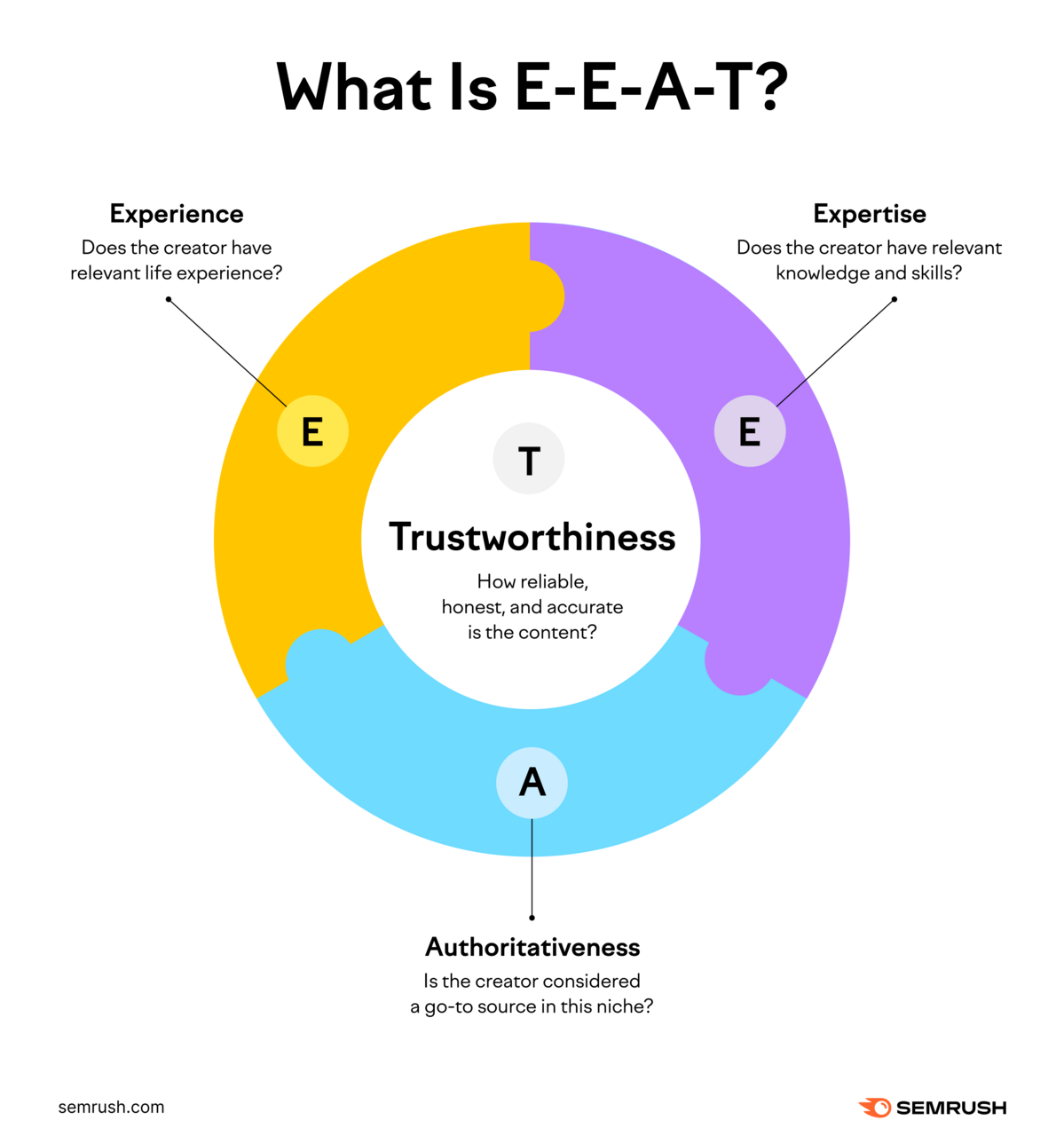
3. SEO Offers a Good Return on Investment (ROI)
SEO provides good ROI because the costs are low, and organic clicks from search engines are free.
Use this formula to calculate ROI: (Revenue from SEO - Cost of SEO / Cost of SEO) x 100.
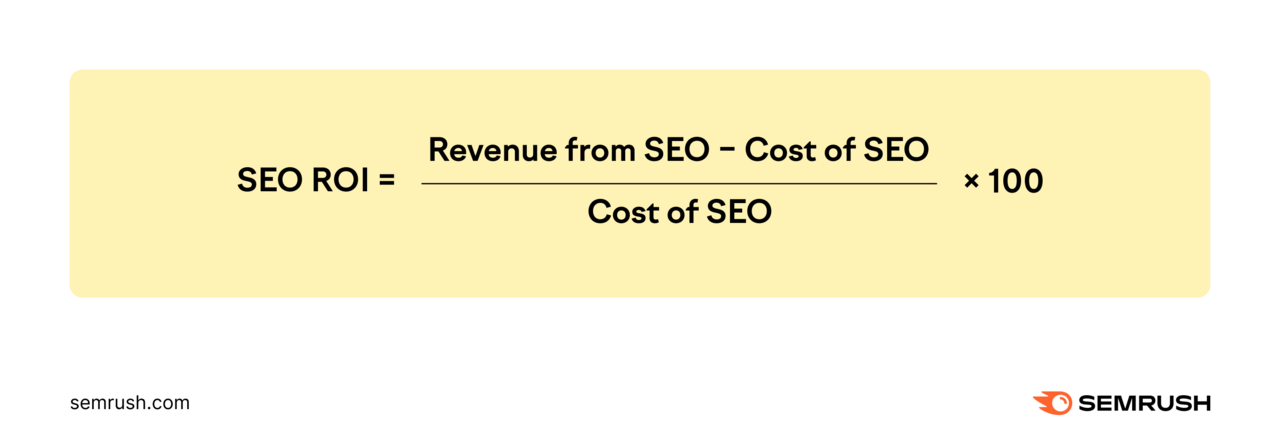
Many businesses see positive ROI from SEO. A First Page Sage study found SEO campaigns yielded 317% to 1389% ROI across 19 industries over a three-year period.
If your team manages SEO in-house, costs can decrease even further. This can improve long-term ROI.
4. SEO Promotes Your Brand 24/7
When your content ranks in organic results, people can find your business any time.
Pay-per-click (PPC) ads show your content only when you pay to run campaigns. Organic search can deliver continuous visibility.
Maintain visibility by:
- Updating your content at regular intervals (every year is a good starting point)
- Publishing content on topics relevant to your audience and your expertise
- Promoting your brand through social media, public relations, and digital collaborations like guest posting
5. SEO Supports Other Marketing Channels
SEO benefits other marketing channels.
For example, page speed optimization (an SEO task) helps retain users who land on your site from ads.
Also, you can repurpose SEO content across other channels. For example, you can:
- Promote a blog post via email marketing
- Share it on social media
- Use it as a lead magnet
When you invest in SEO, you also strengthen your overall marketing strategy.
6. SEO Improves Every Aspect of Your Website
SEO improvements can enhance user experience and page speed, which impact conversion rates.
Many technical SEO optimizations also help user experience, like:
- Fixing broken links that send users and search bots to dead pages
- Resolving duplicate content that confuses users and search engines
- Implementing hreflang tags that match language preferences and help Google rank relevant pages
Addressing site performance issues can also improve Core Web Vitals. Google considers these metrics in search rankings.
Use Site Audit to get a list of any site issues that may be impacting your SEO and user experience.
After you configure and run an audit, click on the “Issues,” tab. “Errors,” are listed at the top and are the most urgent to fix (like 400 bad requests, broken internal links, or issues with your schema markup.
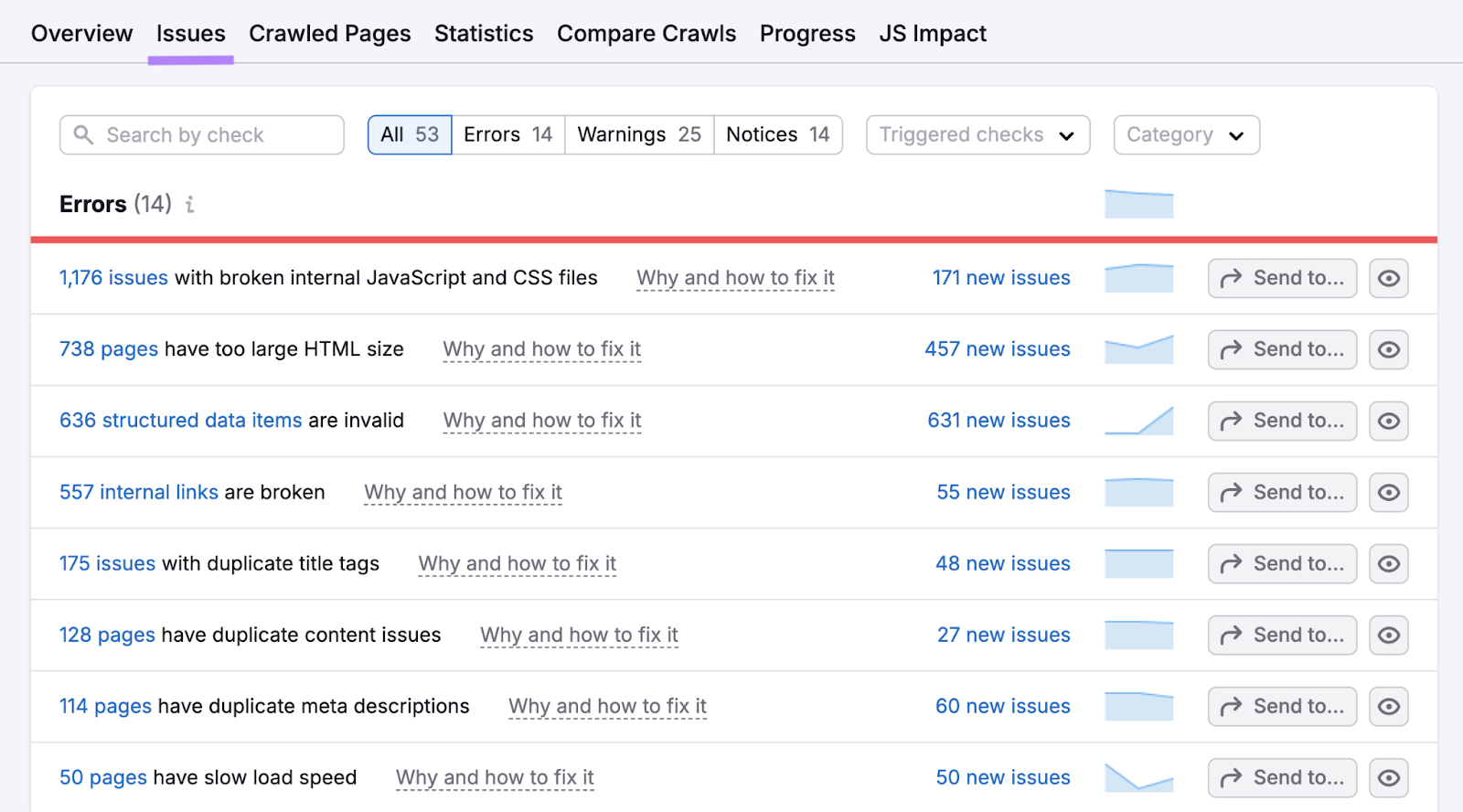
Resolving those issues on your website can improve visibility and enhance your page experience.
7. SEO Is Great for Public Relations
Off-page SEO can also improve digital public relations by placing your business on other websites and in front of new audiences.
This process often involves getting backlinks (links from other sites).
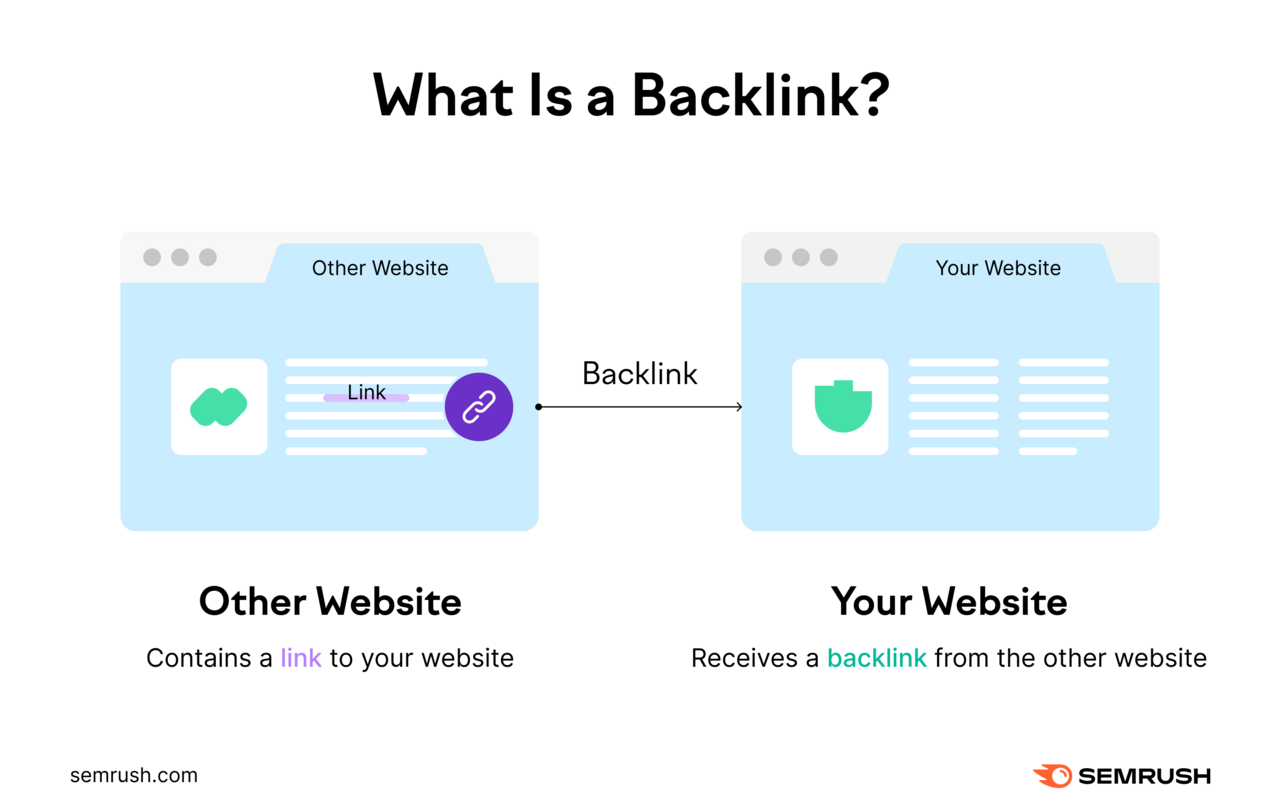
Backlinks from reputable websites help Google see your site as relevant. They can also generate referral traffic.
Effective strategies for PR and SEO include:
- Guest posting
- Podcasting
- Social media posting
- Local citation building
8. SEO Helps You Reach Customers Locally
Local SEO helps your business rank when users search for products or services in a specific area.
It can also qualify your business for the Google Local Pack, which is a group of three businesses that may appear at the top of local search results.
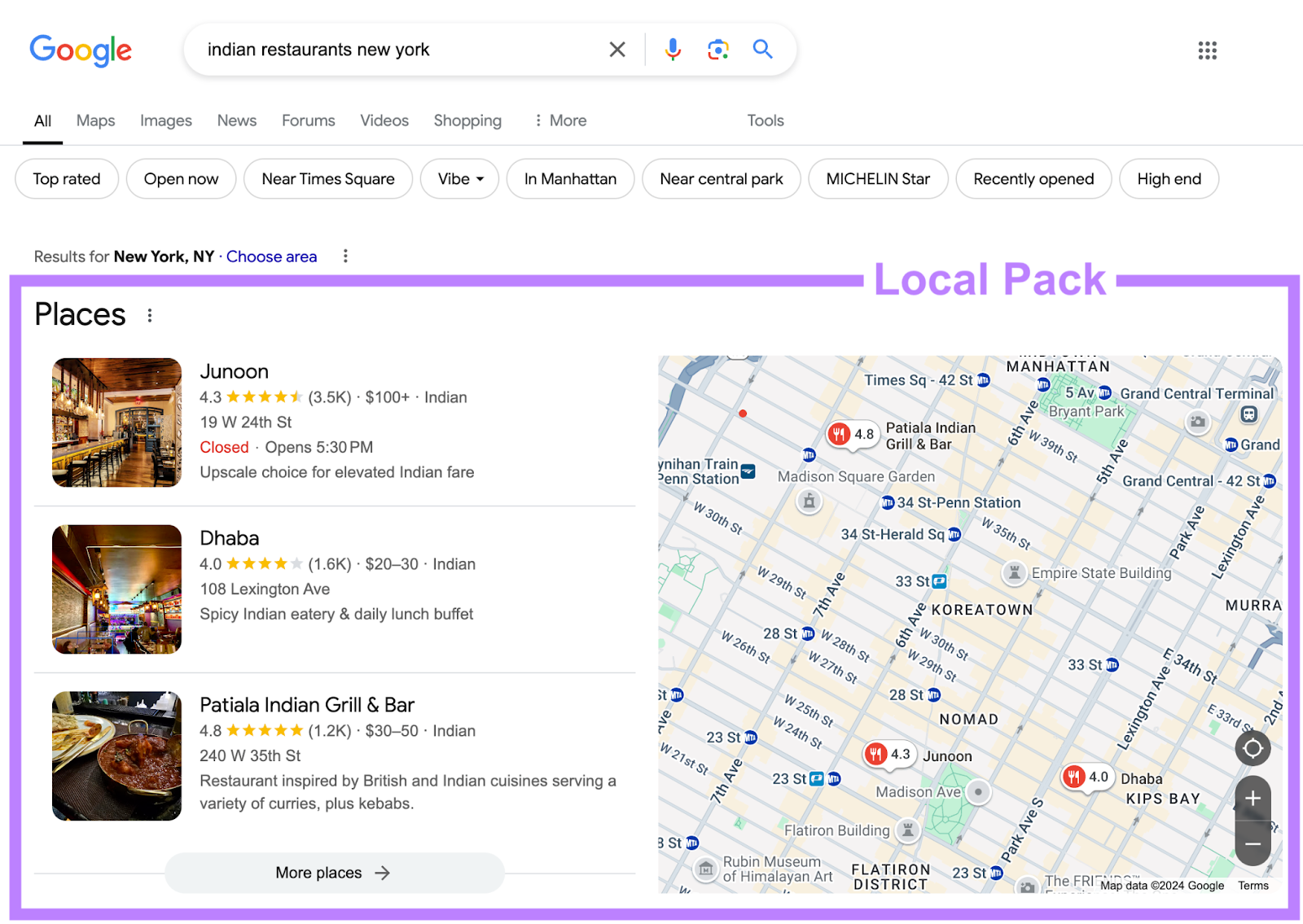
A 2024 study from Backlinko found that 42% of users click on one of these Local Pack results. Ranking here can be a major advantage.
Optimizing your Google Business Profile can make your local business look more appealing. Leading to more calls, appointments, or foot traffic.
9. SEO Keeps You Competitive
Many companies in your industry likely use SEO. SEO competitor analysis can help you understand their strategies and stay competitive.
Analyze competitors to:
- Identify keywords you might want to rank for
- Get ideas for new content
- Find link building opportunities
Use Domain Overview to look up your competitors and analyze their SEO strategy.
10. SEO Helps You Understand Your Customers
Studying SEO keywords and search intent provides insights into your audience’s goals and concerns.
Google wants to show users search results that match their intent, or the true intention behind their search query.
Here are the four main types of search intent:
- Informational: A user wants more information
- Navigational: A user wants to find a specific website
- Commercial: A user is researching a product or service
- Transactional: A user wants to make a purchase
Use Keyword Overview to find search intent. Suppose your business sells pet products. Enter a relevant topic, select your target location, and click “Search.”
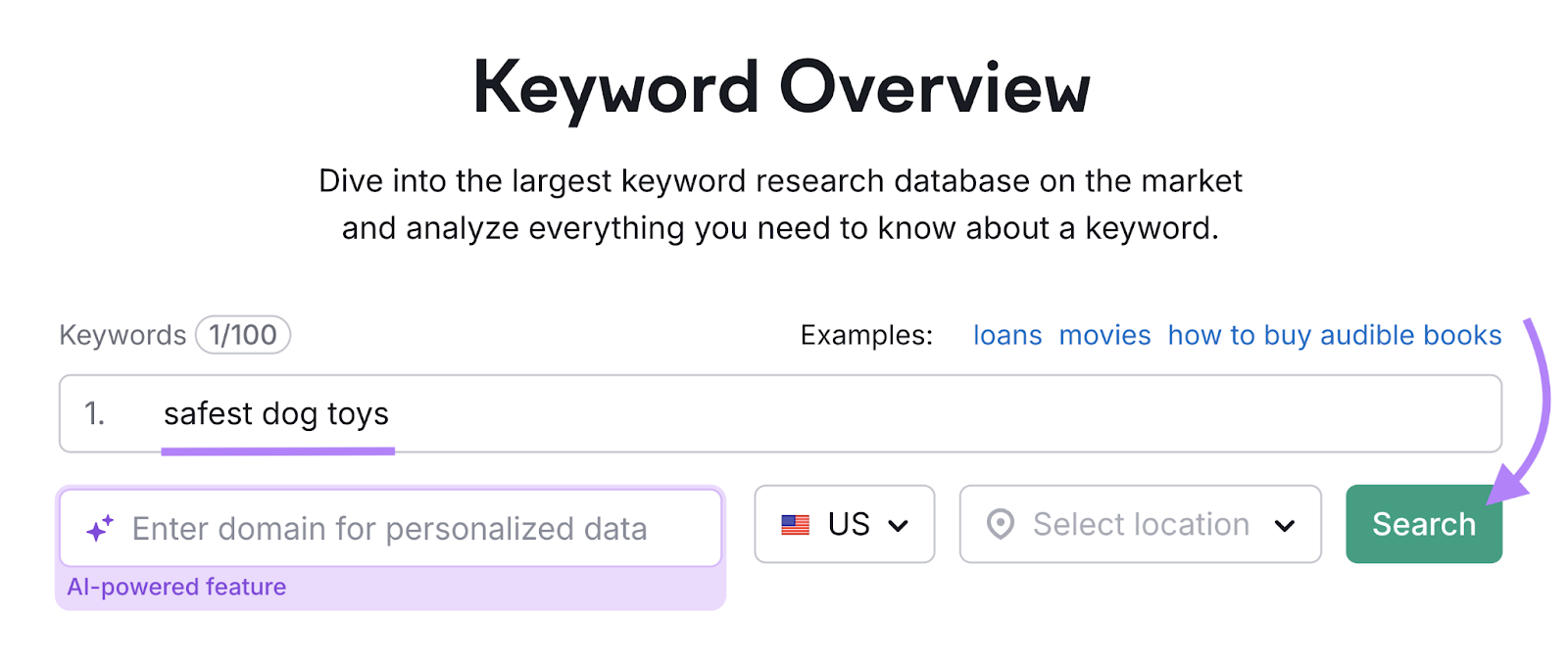
The topic “safest dog toys” has 110 monthly searches and commercial search intent.
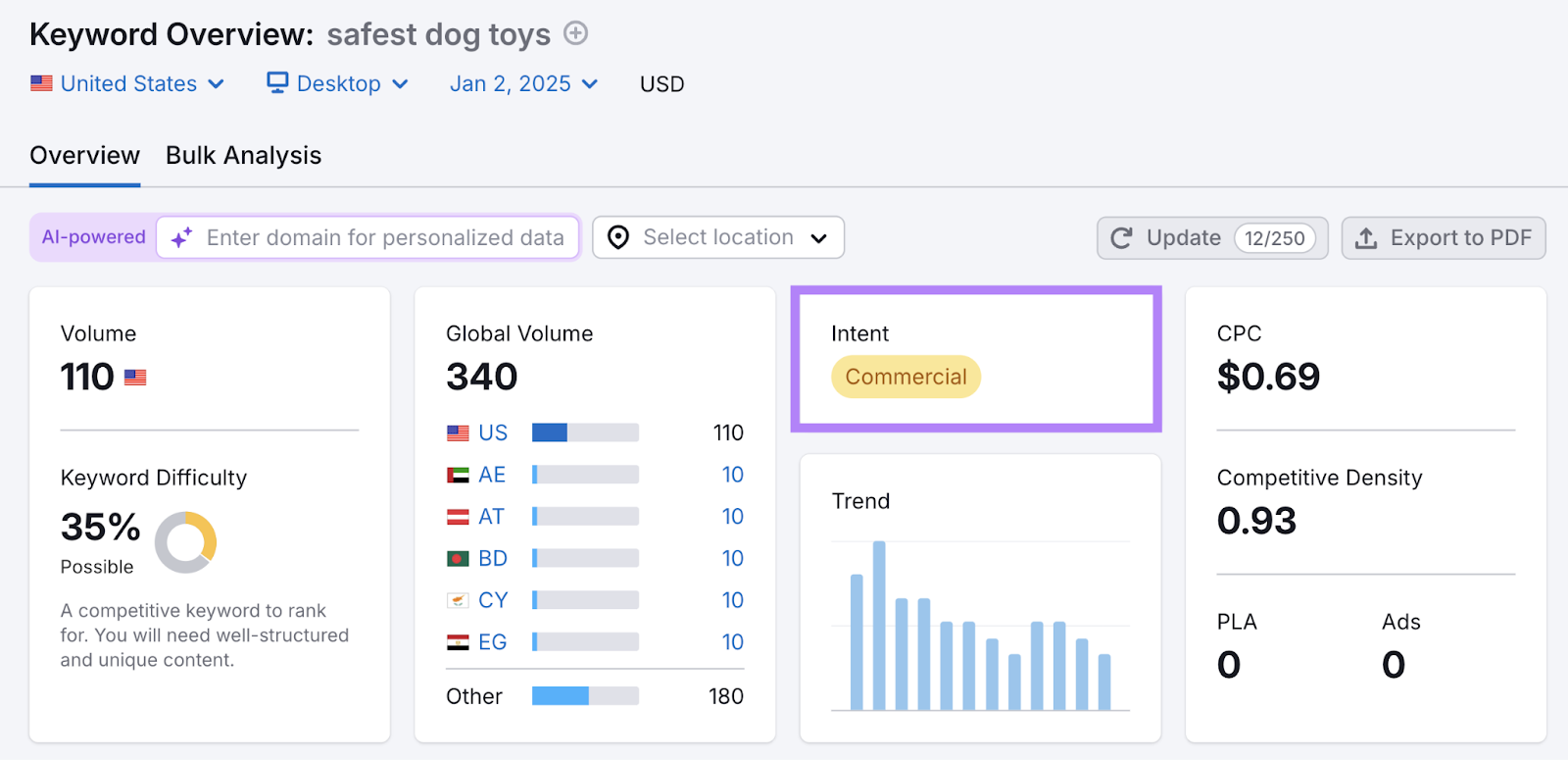
This data tells you that many people in your target market care about safety when buying dog toys. You can create content that highlights safe dog toys and their benefits.
Not only can this help you rank for the topic, but it can also build brand loyalty by meeting your audience’s needs.
Do SEO the Right Way and Reap the Benefits
Now that you know the advantages of search engine optimization, you likely want to reap those benefits for your business.
But SEO is complex, and it’s not always clear where to start. Google’s standards for content are also rising, so creating quality content can take time and effort.
So, consider a trial of a platform like Semrush. Our tools can help you identify what to fix on your website and what topics to start writing about.
